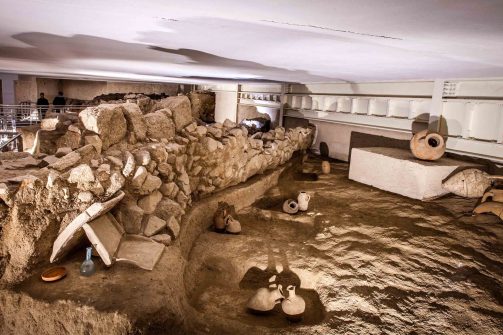The site holds part of the findings from the archaeological excavation carried out during the redevelopment of the space in front of the church of San Simplicio. The excavation, which has rediscovered some 450 tombs from the Roman period (200 B.C. to 300 A.D.), yields a stratification of extra-urban cult and necropolis phases spanning the first 2,000 years of the city’s history, from its birth with the Phoenicians to the Middle Ages.
The site, a flagship of the city, provides tangible evidence of ancient Olbia. Already with the Phoenicians there is probably a place of worship in the subsoil of the present church, the activity of which continued into the Greek and Punic phases. In Roman times the temple was dedicated to the goddess Ceres, and the adjacent space began to be occupied by burials. With Christianity, the place of worship is dedicated to the martyr Simplicius, and in the Judaic age the Romanesque church is erected.









